The Sherlock Holmes Handbook

THE SHERLOCK HOLMES HANDBOOK
The Methods and Mysteries of the Worlds Greatest Detective
BY RANSOM RIGGS ILLUSTRATIONS BY EUGENE SMITH

Copyright 2009 by Quirk Productions, Inc.
All rights reserved. No part of this book may be reproduced in any form without written permission from the publisher.
Library of Congress Cataloging in Publication Number: 2009924887
eISBN: 978-1-59474-477-8
Designed by Doogie Horner
Illustrations by Eugene Smith
Production management by John J. McGurk
Distributed in North America by Chronicle Books
680 Second Street
San Francisco, CA 94107
Quirk Books
215 Church Street
Philadelphia, PA 19106
www.irreference.com
www.quirkbooks.com
Well, I have a trade of my own. I suppose I am the only one in the world. Im a consulting detective, if you can understand what that is. Here in London we have lots of Government detectives and lots of private ones. When these fellows are at fault they come to me, and I manage to put them on the right scent. They lay all the evidence before me, and I am generally able, by the help of my knowledge of the history of crime, to set them straight. There is a strong family resemblance about misdeeds, and if you have all the details of a thousand at your finger ends, it is odd if you cant unravel the thousand and first.
Sherlock Holmes in A Study in Scarlet
TABLE OF CONTENTS
Introduction
My name is Sherlock Holmes. It is my business to know what other people dont know.
The Adventure of the Blue Carbuncle
 midst the vast breadth of works written about Sherlock Holmes, the volume which you hold in your hands is unique. It seeks both to instruct the aspiring investigator in the ways of the master and to serve as an entre for the casual reader into the fascinating milieu, brilliant methods, and unorthodox habits of the worlds most famous consulting detective.
midst the vast breadth of works written about Sherlock Holmes, the volume which you hold in your hands is unique. It seeks both to instruct the aspiring investigator in the ways of the master and to serve as an entre for the casual reader into the fascinating milieu, brilliant methods, and unorthodox habits of the worlds most famous consulting detective.
Some readers may wonder, given the volume of material on Sherlock Holmes already extant, why another book is warranted; there were fictional detectives before him, after all, and have been countless sinceso, why Holmes? The answer may help to illuminate why the fifty-six short stories in which he appears have never been out of print. His character is a prototype that has often been imitated but never improved upon and whose legendary methods of logical deduction are studied by real-world investigators to this day. With Sherlock Holmes, Arthur Conan Doyle brought the detective story into the modern era, perfected the crime thriller, and even helped birth the spy genre in several WWI-era stories in which Holmes protects British secrets from foreign enemies and acts as a double agent. The contemporary police procedurals which now clog our airwaves owe their existence to Sherlock Holmes, and the great bulk of buddy cop movies trade upon a model established by Holmes and Watson. More than simply influential, Sherlock Holmes has long been the quintessential detective: the standard by which all others are judged.
To fully appreciate Holmess genius, however, we must understand something of the world in which he lived and plied his trade: the bustling, grimy, fog-benighted London of the late Victorian era, which plays a starring role in many of the detectives adventures. In those days it was a city just emerged from an industrial revolution that had transformed it almost beyond recognition. From just 850,000 citizens in 1810, its population had exploded to more than six million by the turn of the twentieth century, turning London into one of the worlds most colorful and cosmopolitan cities, teeming with immigrants newly arrived from Scotland, famine-plagued Ireland, Asia, Africa, continental Europe, and the Americas. It was the worlds largest city and the capital of an empire which controlled the destinies of four hundred million subjects. As it grew eightfold in physical size in less than a century, sprouting suburbs many miles distant from the banks of the Thames, the original City of London and its ancient walls became merely the core of a sprawling, imposing metropolis. One may go east or north or south or west from the city center, wrote an overwhelmed American visitor in 1895, and almost despair of ever reaching the rim.
At first, the police couldnt keep up. Extreme poverty in overcrowded slums had bred a vast criminal underclass dependent on petty thievery just to survive. By 1870 nearly a million Londoners were crowded into tenements along the mean streets of the East End, and those who couldnt find low-paying day labor at the docks, employment at one of the citys many sweatshops, or some other form of subsistence income were often forced to choose between starvation and a life of crime. Scotland Yard, the police force whose jurisdiction was Londons new urban sprawl, had been only instituted in 1829 and took fifty years or so to prove its effectiveness.
By the turn of the century, Scotland Yard had reduced crime in the city markedly, but forensic science was very much in its infancy, dedicated criminal investigators were a relatively new innovation, and Sherlock Holmess opinion of them as well-meaning but ineffective was embraced with enthusiasm by Conan Doyles readership. London was an optimistic city emerging from a troubled period in its history, and it needed brilliant, modern, scientifically minded do-gooders like Sherlock Holmes to strike at the still-beating heart of its criminal underworld. He was, in a way, the citys first superhero.
PART I .
DETECTIVE SKILLS
How to Use Analytical Reasoning
From a drop of water, a logician could infer the possibility of an Atlantic or a Niagara without having seen or heard of one or the other. So all life is a great chain, the nature of which is known whenever we are shown a single link of it.
from The Book of Life, a monograph by Sherlock Holmes
 he mere fact that you are holding this book allows one to make a number of elementary deductions concerning your disposition: that you nurture an interest in criminals and criminality; that you are at least passingly learned in the literary arts; and, like so many others, that you wish to cast a little light upon (and even emulate) Holmess almost preternatural genius for reasoning backward from the thinnest of observed effects to uncannily accurate causes. His celebrated technique is called analytical reasoning, and when paired with a wide-ranging knowledge of forensics, the results can be striking. This is how you may employ it for yourself.
he mere fact that you are holding this book allows one to make a number of elementary deductions concerning your disposition: that you nurture an interest in criminals and criminality; that you are at least passingly learned in the literary arts; and, like so many others, that you wish to cast a little light upon (and even emulate) Holmess almost preternatural genius for reasoning backward from the thinnest of observed effects to uncannily accurate causes. His celebrated technique is called analytical reasoning, and when paired with a wide-ranging knowledge of forensics, the results can be striking. This is how you may employ it for yourself.
1. Become a masterful observer of minutiae. When presented with a mystery, minutiae are the small facts upon which large inferences often depend. For instance, in The Sign of the Four, Watson challenges Holmess assertion that it is difficult for a man to have any object in daily use without leaving the impress of his individuality upon it by handing Holmes a watch that had recently come into Watsons possession. Putting Holmess deductive abilities to the test, Watson asks him to describe the character... of its late owner. Holmes begins by examining the object thoroughly, making the following observations:
The watch is made of gold and was expensive when purchased.
Next page
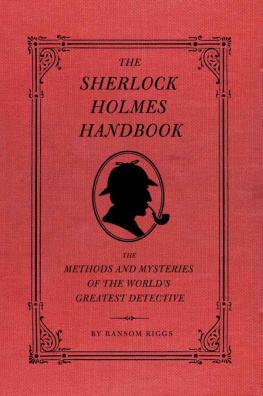
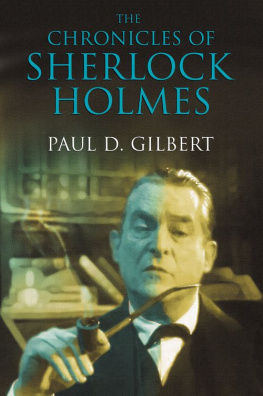
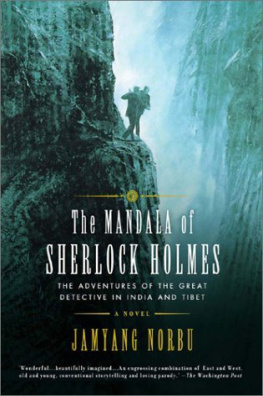
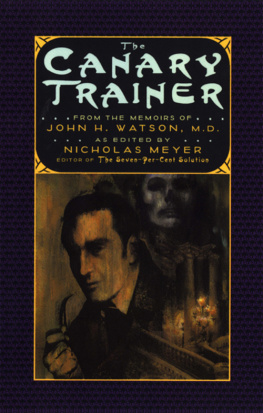
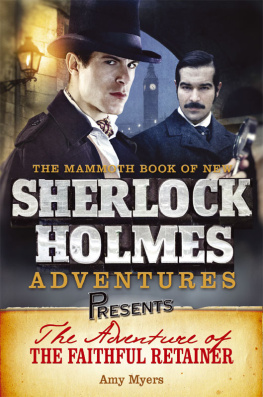

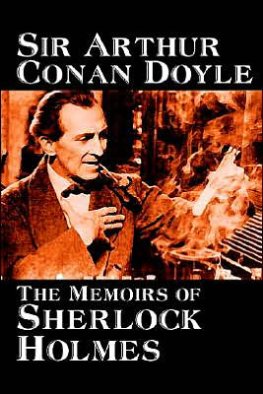
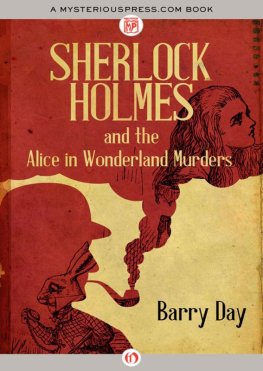
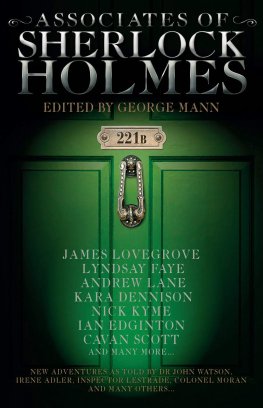
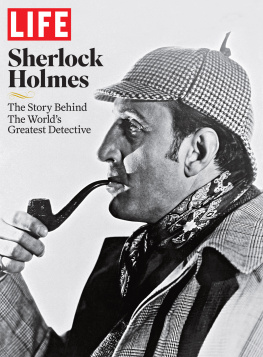






 midst the vast breadth of works written about Sherlock Holmes, the volume which you hold in your hands is unique. It seeks both to instruct the aspiring investigator in the ways of the master and to serve as an entre for the casual reader into the fascinating milieu, brilliant methods, and unorthodox habits of the worlds most famous consulting detective.
midst the vast breadth of works written about Sherlock Holmes, the volume which you hold in your hands is unique. It seeks both to instruct the aspiring investigator in the ways of the master and to serve as an entre for the casual reader into the fascinating milieu, brilliant methods, and unorthodox habits of the worlds most famous consulting detective. he mere fact that you are holding this book allows one to make a number of elementary deductions concerning your disposition: that you nurture an interest in criminals and criminality; that you are at least passingly learned in the literary arts; and, like so many others, that you wish to cast a little light upon (and even emulate) Holmess almost preternatural genius for reasoning backward from the thinnest of observed effects to uncannily accurate causes. His celebrated technique is called analytical reasoning, and when paired with a wide-ranging knowledge of forensics, the results can be striking. This is how you may employ it for yourself.
he mere fact that you are holding this book allows one to make a number of elementary deductions concerning your disposition: that you nurture an interest in criminals and criminality; that you are at least passingly learned in the literary arts; and, like so many others, that you wish to cast a little light upon (and even emulate) Holmess almost preternatural genius for reasoning backward from the thinnest of observed effects to uncannily accurate causes. His celebrated technique is called analytical reasoning, and when paired with a wide-ranging knowledge of forensics, the results can be striking. This is how you may employ it for yourself.